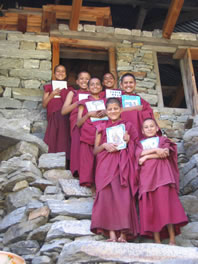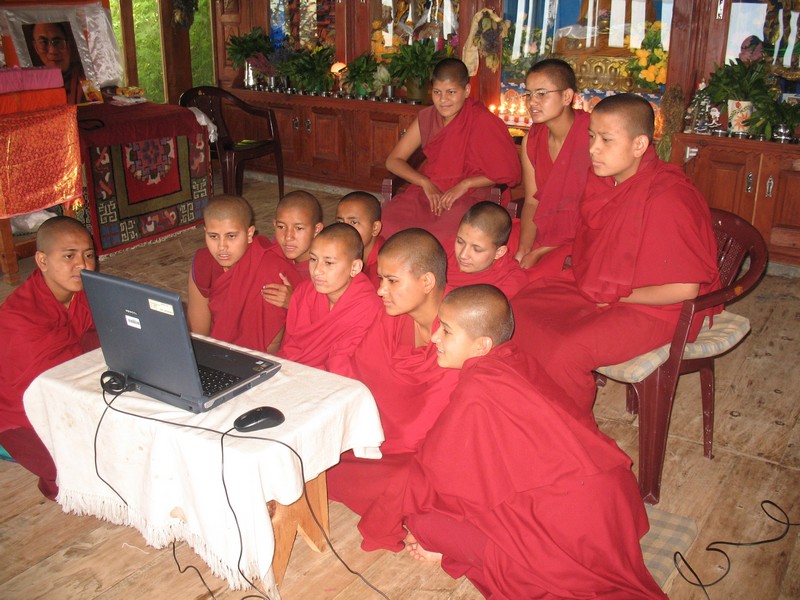Jampa Choling Institute (Meeru)
Jampa Choling Institute is situated in Meeru, Kinnaur, in the state of Himachal Pradesh. Kinnaur enjoyed close relations with Tibet, especially before India’s independence and China’s occupation of Tibet. It is said that the entire region of Kinnaur used to be Buddhist; the people from Upper-Kinnaur look more Tibetan than Indian. However, since the border with Tibet closed, Buddhism has been gradually disappearing in Kinnaur.
In the villages in Kinnaur, people draw on Hindu and Buddhist beliefs and practices. Almost every village has at least one Hindu temple and one Buddhist temple. The village of Meeru reveres the village god, who is responsible for everything that happens there. The village god has been around ever since the villagers can remember and is respected in a large number of villages, with residences in two temples, one old and one new.

In 2000, Tenzin Uphal, a widow from Meeru decided to donate a piece of land for the building of a Buddhist monastery for women. At that time, there was no Buddhist nunnery in Kinnaur. Young women who aspired to become Buddhist nuns had to leave the area and go to Dharamsala to study, if they were lucky enough to be admitted. The founding of Jampa Choling Monastery attracted 25 young women from the area who started building the nunnery with their own hands. The project was under the guidance of Tenzin Dolma, a devout, older Buddhist woman from Meeru. Tenzin Uphal, the donor of the land, became a nun at Jampa Chöling and lived there until her death in 2014. Thanks to her kindness and the generosity of many donors, the monastery has continued to grow.
For the first years, before they were able to build Jampa Chöling, the young women lived as renunciants in a small room in the village temple in Meeru. During the process of building the monastery, some women left to go to study in Ladakh and Dharamsala, discouraged by the hard work, lack of facilities, and lack of studies. In summer 2003, the remaining 17 women started living in the nearly finished monastery and received the precepts of a nun. That summer, two young nuns from Dharamsala came for three months to get the new nuns started with their studies and prayers. Due to the remoteness of the area and the lack of facilities, it took a huge effort to find a teacher willing to stay at the monastery on a permanent basis. In the summer of 2004, Jamyang Foundation was finally able to find a fully qualified teacher for the nuns. Gen Jangchup Yarphel taught at the monastery for six years and, when he was called away, the nuns were able to find two other fine teachers.
In 2004, the first American volunteer appeared on the scene to teach the nuns English for the summer. Since then, the nuns have enjoyed the company of volunteer teachers every summer. During the year, the nuns study Tibetan language and Buddhist studies, including philosophy and debate, with their teacher (gen-la). In the summer, the curriculum is enriched with classes on English, geography, math, bookkeeping, art, biology, and hygiene.
At present, there are 21 nuns and two teachers at the monastery. Both teachers are highly respected scholars with geshe degrees. They teach the nuns Tibetan, philosophy, debate, and other subjects. In the summertime, the nuns enjoy studying English and other subjects with visiting volunteer teachers. In the wintertime, the travel to Bodhgaya to study at Sanghamitra Institute. Four laptops were donated to the monastery and the senior nuns have been learning to use them. CDs with dictionaries and language learning programs make it possible for the nuns to study English and listen to Dharma teachings in winter. In 2013, several buildings at the monastery were severely damaged by landslides and need to be rebuilt. The nuns’ living quarters are seriously overcrowded, but they remain determined to work hard and get a good education.


